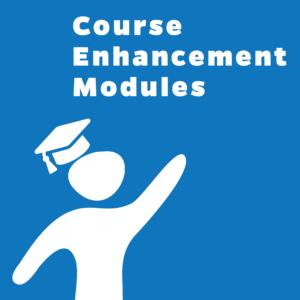Inclusive Education
The Course Enhancement Module (CEM) on inclusive education is a compilation of resources intended for use in the development and enhancement of teacher and leadership education courses as well as for professional development (PD) programs for practitioners.
Purpose
The resources are designed to support professional learning opportunities for stakeholders invested in the support and instruction of students with disabilities and others who struggle with learning to meet college- and career-readiness standards.
Inclusive education refers to the school-wide approach to delivering supports and services to students with disabilities in general education settings (Sailor & McCart, 2014). Inclusive education is not a program or a place but a practice of valuing all students as members of chronologically age-appropriate general education classrooms. Within an inclusive service-delivery model, no special classrooms exist except for those that provide integrated enrichment and supplemental instructional activities for all students (Halverson & Neary, 2009). Finally, inclusive education embraces all students, recognizing that the type or severity of a disability cannot prevent a student from being included. In other words, “inclusion is a right, not a privilege for a select few” (Oberti v. Board of Education of Clementon School District, 1993).
Rationale
Since its inception, special education services have largely mirrored the segregated practices that have characterized service delivery for people with disabilities throughout history. Prior to 1975, students with disabilities were not required to be educated in the United States, and many children with the most significant disabilities were confined to institutions for life. When students with significant disabilities were allowed to attend school, they were usually grouped together in special education classes where the focus of instruction was to meet developmental needs (Brown, Nietupski, & Hamre-Nietupski, 1976) rather than to address their potential.
Born from a civil-rights perspective, there are now three converging areas of support for inclusive practices. Social justice and civil rights continue to guide the implementation of inclusive practices, including system-of-supports and social-model-of-disability perspectives. A second area of support comes from federal law, including the Individuals with Disabilities Education Improvement Act (IDEA) of 2004 and supporting case law. Last, empirical research findings from the past four decades document the positive outcomes of inclusive education for students who do and do not experience disability.
Objectives
- Knowledge:
- Understand what inclusive education is and is not.
- Understand how inclusive education is related to meeting the needs of all students and is not just an issue related to students who receive special education services.
- Skills:
- Provide access to the Common Core State Standards (CCSS) to students with disabilities, providing embedded instruction of core academics and functional skills within the general education context.
- Design and implement inclusive support strategies for a variety of students.
- Identify how evidence-based instructional practices are operationalized within preschool, elementary, and middle and high school contexts.
- Develop individualized education program (IEP) goals and benchmarks that align with CCSS and facilitate embedded instruction in general education settings.
- Analyze the environment to determine which supports services, etc. are necessary.
- Apply evidence-based strategies to facilitate the social experiences of students.
- Dispositions:
- Values educational equity for all students, including those with the most significant support needs.
- Committed to collaborate and problem solve with other professionals and educators, families, and students to develop and implement effective inclusive practices.



